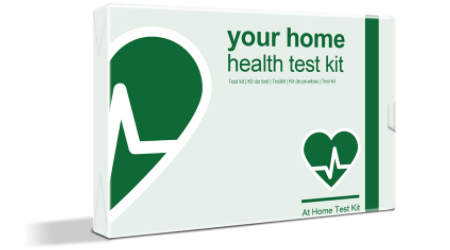When your body is fighting you at every waking moment, life is often a lot harder than it should be, no matter how determined you are. Rather than just thinking that you’re sick or not taking proper care of yourself, have you ever considered the thought that you might just have an undiagnosed food allergy? Food allergies don’t have to be anaphylactic or involve a rash. Sometimes they feel like severe stomach discomfort and migraines. Getting a test for allergies could just help you to answer the concern once and for all.
3 options to test for allergies
There are a few options available to test for allergies, which is great when you want to put the time and determine which method is best for you. Since we’re not all made equal, it’s reassuring to think that you can choose an actual testing method that works for you; that’s the reality of modern science!
- Blood sample test: This kind of allergy test uses a skin prick on the finger to deposit blood on a provided card.This card will be sent to a certified lab and tested against the most common food allergens to give you the results. The fully inclusive test is sent directly to you, so you can do it from home (and get the results from home, too).
- Hair sample test: Another at-home test for allergies is the idea of sending in a hair sample. To do this, you will download the submission form and follow the instructions when it comes to sending in your hair sample. The test will be done to determine what your hair documents a response to, and the results will be sent to you via PDF as well. This is especially helpful if you are not comfortable with blood or skin tests.
- Skin prick test: The classic test for allergies, this test uses a grid-like pattern on your arms or back, and a series of food allergens are inserted just under the skin to determine what reacts. The reaction will arise — literally — in the form of a raised welt on your skin. This is helpful when you are specifically looking for results within 20 of 30 minutes. This test cannot be done at home. However, it must be done at a speciality allergist clinic.
All of these testing methods will vary on your list of preferences depending on what your comfort level is. The most important thing is to choose the best one for you and your schedule.
An important note about allergies
Regardless of how or when you decide to get a test of allergies, it’s important to make sure that you do get a test done sooner rather than later. An allergy is a serious reaction from your immune system, and one reaction doesn’t guarantee that your future reactions will be the same. A mild allergic reaction (a headache or a rash) could escalate to be one that involves the respiratory system (difficulty breathing) with no warning.
Allergies are difficult, but the testing process itself doesn’t have to be. These are the three best options to get concrete results that will help you fall in step with your body’s needs again for short- and long-term health.

